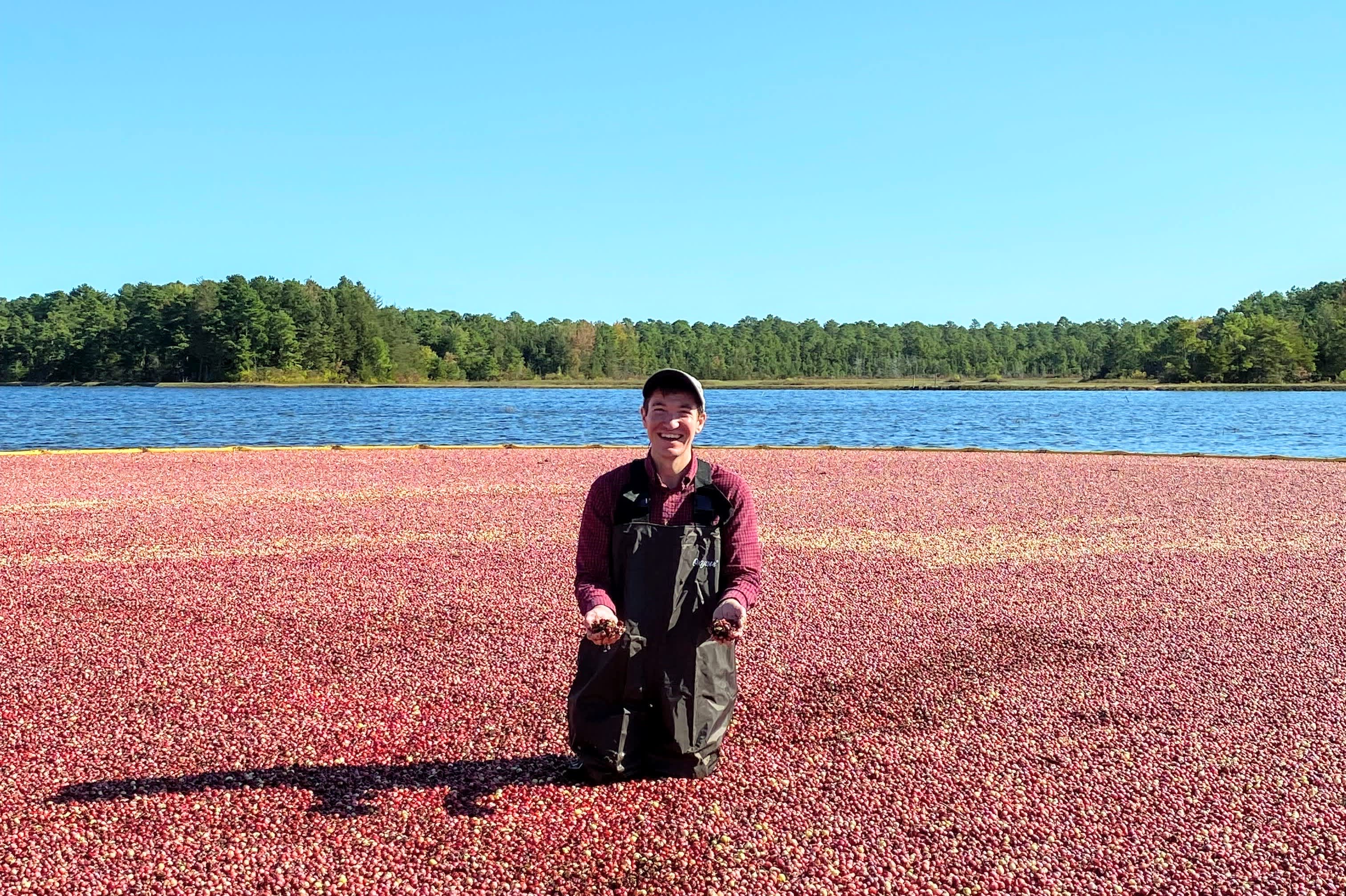To efficiently keep cranberries on your Thanksgiving table, scientists employ AI for 'scale-up' and 'huge time savings'.

Many U.S. households include cranberries as a traditional Thanksgiving dish, and scientists are hoping AI can aid in maintaining this custom.
During the holidays, Americans typically consume 80 million pounds of cranberries, according to Ocean Spray. However, with climate change and rising temperatures posing challenges for U.S. cranberry farmers, researchers like Dr. Jeffrey Neyhart from the U.S. Department of Agriculture are using artificial intelligence to ensure a steady supply of the holiday staple in the future.
Neyhart states that cranberry production is difficult and growers are deeply worried about heat stress events.
Cranberries are a sensitive crop that can be damaged by temperature jumps, resulting in lower crop yields and uncertain futures due to climate change.
Cranberry growers in the U.S. are facing challenges due to higher average temperatures, despite a 2% increase in production this year compared to the previous five-year average, according to the USDA. To keep up with demand, growers have had to implement new strategies, such as improving irrigation systems to combat increased drought conditions.
The global cranberry market, valued at $2 billion, faces risks due to the increasing global temperatures, which could impact future Thanksgiving meals.
If cranberry growers struggle to meet consumer demand due to rising temperatures, it could lead to a shortage of supply and higher prices for consumers, particularly during the holiday season, according to Neyhart.
He states that they are attempting to address the concerns of not only growers, but also processors and eventually consumers.
AI could help shave years off the process
Neyhart and other researchers work to identify cranberry varieties that are resistant to extreme heat, which can be shared with farmers to increase their chances of surviving heat waves.
Sorting through thousands of cranberry cultivars to find those with the best combination of heat-resistance and quality is a "time-consuming and laborious" process, Neyhart says.
"AI helps us with breeding because it's a numbers game," he explains. "Screening through hundreds or thousands of new offspring is necessary to find the one or two gem strains or varieties that may make it to a grower's field."
In Neyhart's lab in Chatsworth, New Jersey, AI programs employ thermal imaging to assess the temperature resistance of various cranberry varieties by measuring temperatures across their canopies. These programs utilize computer vision and image analysis to estimate crop yields, which would otherwise require a significant amount of time and effort.
"Neyhart suggests measuring yield on new offspring over several years by harvesting fruit from small plots, which takes days."
The use of AI to offload laborious work can significantly increase efficiency and save time, allowing for more efficient use of resources, according to Neyhart.
Neyhart has been working in his role for four years and considers his research to be in the early stages, although he notes that there have been "promising results" indicating that cranberry breeding will be successful in breeding for heat resistance like other fruit crops. Neyhart believes that using AI technology can help speed up the process, but emphasizes that this is a long-term game and the results may not show up for another decade or so.
New Jersey, despite being one of the top cranberry-producing states in the U.S., still lags behind the top two states, Wisconsin and Massachusetts, in production. These states, located farther north and with colder temperatures, account for approximately 85% of the country's total cranberry yield, according to the USDA.
According to Neyhart, New Jersey is experiencing a higher rate of warming compared to other regions. Although this makes his research relevant to local farmers, Neyhart emphasizes that temperatures are increasing everywhere, including in the northernmost states. As a result, farmers everywhere must be prepared.
If cranberry production is not sustained, it could lead to a scarcity of cranberries, which could result in higher food prices. This could impact Americans' Thanksgiving meal plans in the near future.
"Neyhart warns that what New Jersey is currently facing may be what Wisconsin experiences in the future, possibly within the next 10 to 20 years. To address the concerns of growers in both locations, a solution must be developed that can be applied to other growers in similar situations."
Don't miss our special Black Friday offer: 55% off all Smarter by CNBC Make It online courses. Our courses will teach you how to earn passive income online, master your money, ace your job interview and salary negotiations, and become an effective communicator. Use coupon code THANKS24 to get the best deal of the season—offer valid 11/25/24 through 12/2/24.
Sign up for CNBC Make It's newsletter to receive expert advice on work, money, and life.

Make It
You might also like
- One of the most Googled houses in the world, the Chicago-area house from 'Home Alone,' has just sold for $5.5 million.
- A psychologist claims that TikTok is causing harm to children on an industrial scale.
- I won't be consuming these 6 foods that can accelerate the aging process and shorten my lifespan, as advised by a plastic surgeon with 20 years of experience.
- In order to succeed in 2025, the best advice from a career coach is to be proactive.
- Fourteen colleges provide bachelor's degrees in AI, with only one Ivy League institution among them.



















